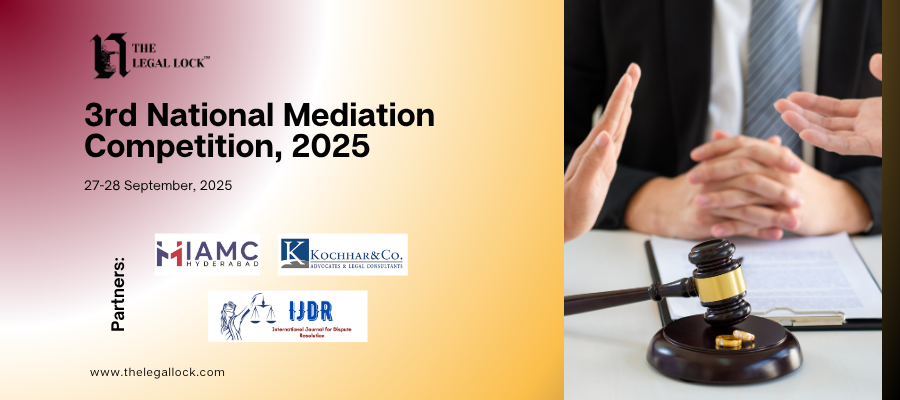Surendra Trading Company vs Juggilal Kamlapat Jute Mills

By: Mugdha Singh

Brief of facts
In this particular case, Surendra Trading Company Vs. Juggilal Kamlapat Jute Mills Company Ltd & Ors (Civil Appeal No. 8400 of 2017) the brief fact is that the appellant company filed a petition under Section 8 of Insolvency Bankruptcy Code, against the respondent company.
A certain amount was claimed by the appellant company but the particular application was filed without following Rule 6 of Insolvency and Bankruptcy (Application to Adjudicating Authority) Rules, 2016.
Issues Raised
- • Whether part of the NCLAT order justified?
- • Whether the time of 14 days given to NCLT for admitting or rejecting an application is mandatory or directory?
- • Whether the period of 7 days given to the application for rectifying the defects is mandatory or directory?
- • Whether such a rejection would be treated as rejecting the application on merits thereby debarring the application from filing a fresh application or it is to be treated as an administrative order?
Judgement
The Supreme Court was worried about the validity of the NCLATs decision, which ruled that the 7-day time limit set forth in the proviso to section 9(5) of the IBC for accepting or rejecting a petition or initiating the insolvency resolution procedure is required.
The Hon’ble Apex Court has on numerous occasions interpreted the word ‘shall’ to mean ‘may’. It cited cases such as P.T. Rajan Vs. T.P.M. Sahir and Ors. (2003) 8 SCC 498. Garbari Union Co-operative Agricultural Credit Society Limited & Anr. V. Swapan Kumar Jana & Ors. (1997) 1 CHN 189, where it was held that the statutory obligations and not mandatory.
Also, the Apex Court relied on judgment (1998) 4 SCC 543: AIR 1998 SC 1827) where it was rightly held that a procedural law should not ordinarily be constructed as mandatory; the procedural law is always subservient to and is an aid to justice.
Any interpretation which eludes or frustrates the recipient of justice is not to be followed.
Interpretation by Supreme Court
The Apex Court also relied on Order 8 Rule 1 CPC which provided for 30 days limit and said that “it is to expedite and not to scuttle the hearing.
The provision spells out a disability on the defendant. It does not impose an embargo on the power of the court to extend the time.”
The Supreme Court ruled that the NCLAT’s determined that a 7 days time limit is required without any reasonable reasoning.
It went on to say that the 180-day deadline set forth in the IBC for completing the resolution procedure could not be used to support NCLAT’s decision because the 180-days deadline begins on the date application is accepted.
Prior to the time spent scrutinising the application, correcting flaws in the application or NCLT admitting the application, among other things, cannot be considered.
It is not to be considered as a legally submitted application useless the objections are withdrawn. Only once the application is complete in every way is it allowed to be considered.
It was noted that there might be significant, reasonable and justified grounds for not being able to remove the flaws within 7 days in a specific situation.
As a result, the court determined that the clause requiring the removal of the fault within 7 days is advisory rather than required.
To prevent abuse, the court mandated that each request for a time extension is considered in a balanced manner.
If the objections are not eliminated within 7 days, the applicant must file a written application while refilling the application after eliminating the objections, demonstrating adequate cause for why the application can be considered; otherwise, it must be denied.
The part of the impugned judgment of NCLAT was set aside which makes it mandatory to remove the defects within 7 days.
Interpretation/Analysis
Chapter II of part II of the Code deals with the commercial bankruptcy resolution process. Under section 7 of the Code, the fiscal creditor can initiate commercial bankruptcy resolution by the functional creditor.
The functional creditor is defined in Section 5 (2) of the law to mean a person to whom a functional debt is possessed and includes any person to whom similar debt has been fairly assigned or transferred.
This Section provides that if ‘default’ has passed in payment of the said debt within the meaning of Section 2 (12), such a functional creditor may shoot a demand notice to the commercial debtor demanding payment of the quantum involved in the dereliction, in the prescribed manner, giving 10 days notice in this behalf.
The commercial debtor is given 10 days time to bring to the notice of the functional; creditor about the actuality of a disagreement, If any, still, shoot needful evidence for prepayment of overdue functional debt. Still, shoot needful evidence for prepayment of overdue functional debt.
Still, in case the payment isn’t entered or notice of disagreement isn’t entered, the functional creditor can file an operation under Section 9 for the inauguration of the commercial bankruptcy resolution process.
Conclusion
As we all know IBC is just a 5-time old provision and from time to time colourful emendations and judgment give it a shape. The present judgment bandied is an important judgment as it bandied the pivotal provision of IBC.
The statutory system establishing time restrictions provides a clear communication that time is the core of the Code, as NCLAT has rightly said.
As a result, the Code has established strict deadlines, making it one of the most scrupulous laws in the country and reflecting the council’s thing of making India a more effective judicial forum.
It should be well noted that someone can not be denied justice only because it has not performed it’s obligation within the time frame.
References
• Constitution Of India
• IBC, 2016
• https://supremoamicus.org/wp-content/uploads/2020/09/A1v20-43.pdf
• https://indiankanoon.org/doc/58563693/
• https://acelegal.net.in/post.php?id=14
• https://ibclaw.in/whether-the-time-limit-preacribed-in-ibc-2016-for-admitting-or-rejecting-a-petition-or-rejecting-a-petition-or-initiation-of-insolvency-resolution-prcess-is-mandatory-surndra-trading-comapny-vs-juggilal-kamlapat-jute-m/








